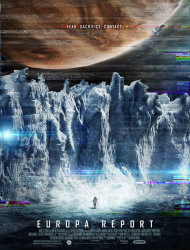El maestro indio del ajedrez produjo ayer la obra de arte más bella de su carrera

Blancas: L. Aronián (Armenia, 2.802). Negras: V. Anand (India, 2.772).Defensa Semieslava (D46). LXXV Festival Tata. Wijk aan Zee (Holanda), 15-1-2013.
Anand produjo ayer la obra de arte más bella de su carrera, a partir de un análisis de laboratorio que preparó hace casi un año, para el Mundial contra Guélfand; pero pensó mucho desde la 15. Esta joya se parece un poco a otra inmortal, Rotlewi-Rubinstein, publicada aquí el 9 de diciembre: 1 d4 d5 2 c4 c6 3 Cf3 Cf6 4 Cc3 e6 5 e3 Cbd7 6 Ad3 dxc4 7 Axc4 b5 8 Ad3 Ad6 9 0–0 0–0 10 Dc2 Ab7 11 a3 Tc8 12 Cg5?! c5!(novedad; mucho mejor que 12 ..Axh2+ 13 Rxh2 Cg4+ 14 Rg1 Dxg5 15 f3! Cgf6 16 b4!, y las blancas tienen gran compensación) 13 Cxh7 Cg4!(la torre de f8 es intocable, por Axh2+ y Dh4) 14 f4? (la continuación más crítica es 14 h3! Ah2+ 15 Rh1 Dh4 -amenaza Dxh3– 16 Ae4 Axe4 17 Dxe4 f5 18 Dxe6+ Rxh7 19 Dxd7 cxd4 20 exd4 Ab8 21 Rg1, pero no es fácil saber si las negras tienen algo más que tablas por repetición) 14 ..cxd4 15 exd4 (si 15 Cxf8 Axf8 16 exd4 Cdf6 17 Rh1 Dxd4 18 h3 Ch5 19 hxg4 Cg3+ 20 Rh2 Cxf1+ 21 Axf1 Ac5 22 De2 Dg1+ 23 Rg3 Td8, con la amenaza Td3+, y el ataque es ganador) 15 ..Ac5!! 16 Ae2 Cde5!!(aún más fuerte que tomar en d4 o Dh4) 17 Axg4 (si 17 fxe5 Dxd4+ 18 Rh1 Dg1+ 19 Txg1 Cf2 mate); si 17 h3 Axd4+ 18 Rh1 Dh4 19 Cg5 f5 -amenaza Dg3– 20 fxe5 Cf2+ 21 Rh2 Axe5+ 22 Rg1 Dg3 23 Af3 Ce4 24 Td1 Dh2+ 25 Rf1 Axc3, y todo cae) 17 ..Axd4+ 18 Rh1 Cxg4 19 Cxf8(diagrama)(tras 19 Cg5 f5!, para Tf6–Th6, las blancas estarían perdidas) 19 ..f5!! (evita Dh7, y amenaza Dh4 y mate imparable) 20 Cg6 Df6 (ahora se amenaza Dxg6 y Dh5) 21 h3 Dxg6 22 De2 Dh5 (amenaza Dxh3) 23 Dd3 Ae3!, y Aronián se rindió. Correspondencia:ajedrez@elpais.es



